Late Summer Hodgepodge
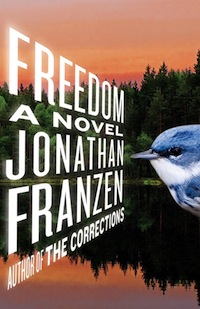
Apparently there’s been keening by a number of white women writers that the New York Times disproportionately touts white males—in this case, Jonathan Franzen and his new opus Freedom received some attention (disproportionate to the relevance of their complaints) here and there. Personally, I might have taken the noise more seriously if uttered by the likes of Dorothy Allison, Amy Bloom, Cynthia Ozick, Joyce Oates, Vendela Vida, or Sigrid Nunez.
Speaking of Freedom, the reviews seem to be piling up everywhere—well, not everywhere, but you know what I mean. Among other things, I found Freedom quite moving, tackling the large targets with alacrity and the personal/emotional issues with razor-sharp intelligence (which is hard to come by on such issues). Plus the writing is just so good—describing the outside humidity as of the “blunt force” degree is a tiny example. Franzen, as far as I know, is not a blabbermouth (meaning, unless things have changed, his so-called interviews are not festooning the world’s literary spaces and places). Here’s one that’s entertaining:
* * *
Some time in recent memory, I was favorably impressed by J.C. Hallman’s The Story About the Story. Sean Manning’s anthology Bound to Last: 30 Writers on Their Most Cherished Book (Da Capo) seems to share a similar spirit, which falls into what Hallman calls creative criticism. Included in this topiary of typists are Ray Bradbury (who also provides an introduction), Francine Prose, Julia Glass, Anthony Doerr, Sigrid Nunez, Jim Shepard, Susan Straight, Philip Meyer, Douglas Brinkley, David Hajdu, Wells Tower, Abigail Thomas, Anthony Swofford, and many proverbial others.
* * *
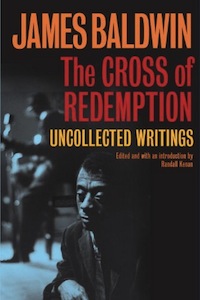
How odd it felt to hold a book by James Baldwin in my hands—the newly published The Cross of Redemption: Uncollected Writings (Pantheon). Not because Baldwin is a marginal or inconsequential writer—exactly opposite.
Introduced and edited by Randall Kenan, these writings, apparently previously published but uncollected, seem prescient and timely: on the possibility of an African-American president and what it might mean, the hypocrisy of American religious fundamentalism, the black church in America, the trials and tribulations of black nationalism, anti-Semitism, the blues and boxing, Russian literary masters, the role of the writer in our society.
Here’s James Baldwin from “Why I Stopped Hating Shakespeare:”
My quarrel with the English language has been that the language re?ected none of my experience. But now I began to see the matter in quite another way. If the language was not my own, it might be the fault of the language; but it might also be my fault. Perhaps the language was not my own because I had never attempted to use it, had only learned to imitate it. If this were so, then it might be made to bear the burden of my experience if I could ?nd the stamina to challenge it, and me, to such a test.
* * *
I don’t know how I came across “The Hexagon of Conquest,” old pal Dagoberto Gilb’s piece in that wonderful journal of international literature, Barcelona Review, but happily I did.
Here’s the Review’s description:
café con leche
In case you are not familiar with Dago, chew on this:
viejitasusto
* * *
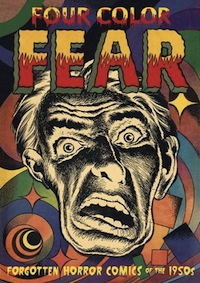
For the most part, Four Color Fear: Forgotten Horror Comics of the 1950s (Fantagraphics) might be viewed as a graphic/comic aficionado’s plaything, but there is lots of material that a social historian should find relevant.
The early 1950s were the high-water mark of horror comics—some 50 titles a month made it to drugstore racks. For the knowledgeable, EC comics were the Cadillac of comics publishers, and EC’s complete output has previously been published. Editors John Benson and Greg Sadowski have done extensive research to collate the best of EC’s competitors—Ajax-Farrell, American Comics Group, Comic Media, Fawcett, Trojan, Youthful, and Ziff-Davis, and have diligently digitally restored the art to reflect the standards of that era.
John Benson asserts:
Comics writers in the 1950s toiled anonymously for the most part, one factor that has led collectors and enthusiasts to concentrate on the art to the exclusion of the writing. But comics are a narrative medium—they tell stories! The original buyers of these comics didn’t just look at the pictures, they read them avidly. So this book isn’t intended as merely a collection of horrific images or a portfolio of art by great comics artists, though it should well satisfy those criteria. These stories are also entertaining as stories. In the best of these, the art and the narrative complement each other in subtle and sophisticated ways.
By the way, I found the images hilarious. Yup.
* * *
I have previously pointed out the interesting books coming out of Harper Perennial, most recently Ben Greenman’s stories.
Simon Van Booy’s (The Secret Lives of People in Love) Love Begins in Winter won the prestigious Frank O’Connor International Short Story Award, and now on a different note or chord, he offers a trio of tomes—Why We Need Love, Why We Fight, and Why Our Decisions Don’t Matter (Harper Perennial).
These volumes are in essence commonplace books that Van Booy has “curated,” drawing on the wisdom of the ages (so to speak) including an array of thinkers such as Sophocles, Tacitus, Charles Dickens, Victor Hugo, Walt Whitman, Friedrich Nietzsche, Oscar Wilde, General George Patton, and, of course, many more.
Beware if you are looking for a definitive “Because…” for the whys posed in the titles—there are none.
* * *
One must say this for America’s right wing, there is a disproportionate number of (unwitting) comedians (American lefties just have no sense of humor) offering up a mumbo jumbo of commentary and dogma of all stripes.
I am not familiar with “popular conservative blogger” Pamela Geller (she does have nice hair), but she has apparently turned her inimitable skills to penning The Post-American Presidency (Threshold).
The subtitle, “The Obama Administration’s War on America,” should tell all you need to know about Geller’s point of view. In case you need more, there’s this from the publisher:
The Post-American Presidency
I think she’s serious.
* * *
Chalmers Johnson, the author of the Blowback Trilogy (Blowback: The Costs and Consequences of American Empire, The Sorrows of Empire, and Nemesis: The Last Days of the American Republic) has eschewed humor for riveting insight.
His new book, America’s Last Best Hope, collects essays he has written in the past three years that reiterate the dangers of allowing the Pentagon free reign over the U.S. budget and policy.
That is, of course, as the saying goes, if you can handle the truth
* * *
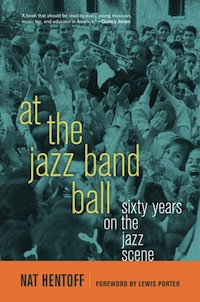
It is difficult at this end of my life to precisely credit the people and thinking and events that have been influences. But based on my early, adolescent acquaintance with Nat Hentoff in the pages of The Village Voice (when it meant something) and Downbeat, I would say that the self-styled “Jewish atheist itinerant subversive civil-libertarian pro-lifer” opened my eyes to a world not much present in Chicago’s Golden Ghetto, West Rogers Park.
I have lost track of Hentoff in the last few years, thus it is a happy discovery to come upon At the Jazz Band Ball: Sixty Years on the Jazz Scene (University of California Press). Larry Blumenfeld sums up:
Hentoff is neither the first nor the last jazz lover to exalt the music as both metaphor and laboratory for whatever we mean when we speak of an American experiment. Ralph Ellison expressed all that with more literary distinction and greater connection to the context of African-American arts. But if Ken Burns’s 19-hour PBS series “Jazz” in 2000 offered something of a caricature of jazz as the symbol of American values and virtues, Hentoff’s body of writings has come closest to painting an honest working portrait of the idea. This comes clear when he describes momentous events, such as the making of the “Freedom Now!” suite, but just as well when he writes of fifth-graders in Sarasota, Fla., where a jazz organization convinced a public school system to teach history of jazz alongside American history. (“These little kids think Coltrane is cool,” he writes.)
Thanks Nat.
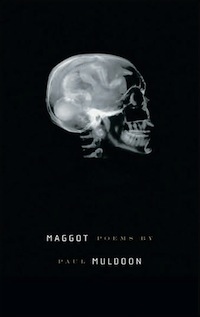
By the way, that Princeton mentor and Pulitzer Prize-winning poet Paul Muldoon chooses to title his eleventh and newest collection, Maggot (FSG), suggests he is not especially squeamish or tentative.
Here from Maggot, “A Second Hummingbird”:
Or have a listen to a feast of Muldoon.
